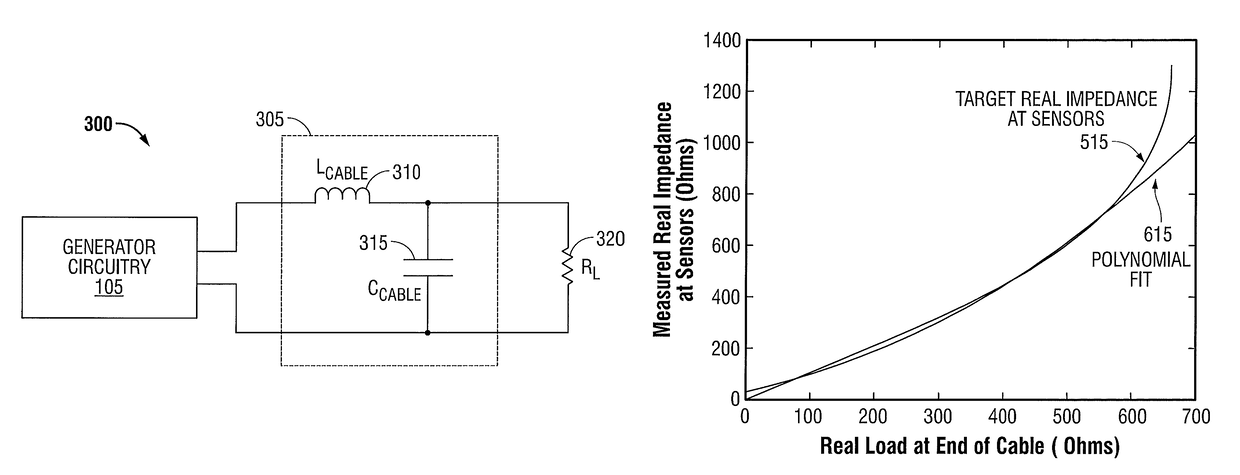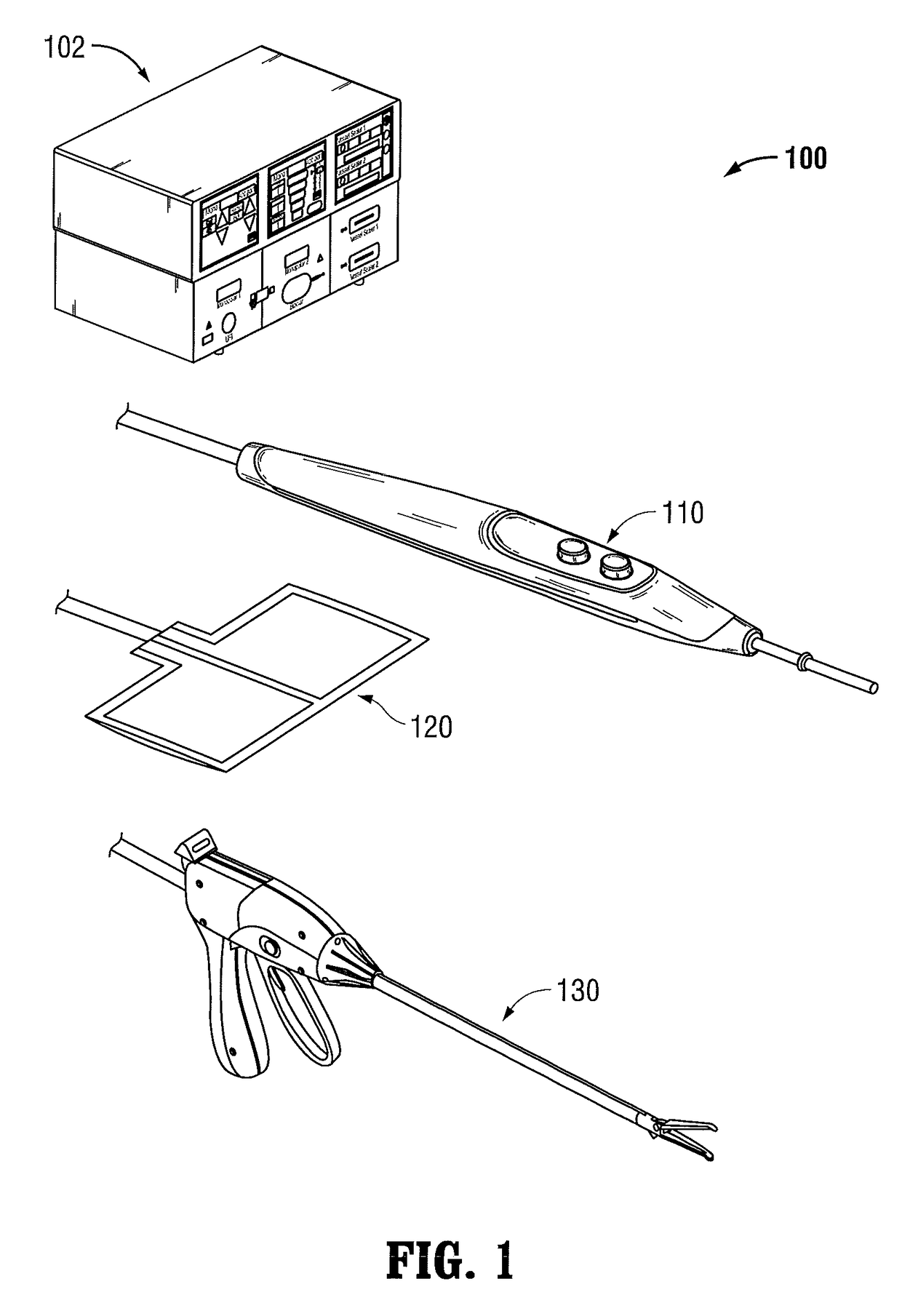Systems and methods for measuring tissue impedance through an electrosurgical cable
a technology of electrosurgical cable and tissue impedance, which is applied in the field of electrosurgical cable, can solve the problems of increasing heating, requiring a significant amount of memory and processing power, and inaccurate power and impedance measurements, so as to reduce memory and processing power and accurately measure power and tissue impedance.
- Summary
- Abstract
- Description
- Claims
- Application Information
AI Technical Summary
Benefits of technology
Problems solved by technology
Method used
Image
Examples
Embodiment Construction
[0038]As described above, the cable in an electrosurgical system creates a circuit network between the voltage and current sensors and the tissue being treated, which results in inaccurate power and impedance measurements. Thus, to more accurately measure power and impedance, many generators employ compensation algorithms that account for the impedance of the cable's circuit network. These compensation algorithms involve the measurement and storage of multiple cable parameters, such as series inductance, shunt capacitance, and resistance, which are used as constants in the solutions to the Kirchhoff current and voltage equations for multiple nodes in the model of the cable's circuit network. The compensation algorithms also involve many mathematical operations, e.g., multiplies and additions, on complex numbers having real and imaginary components.
[0039]The electrosurgical systems and methods of the present disclosure reduce the amount of memory and processing power needed to accura...
PUM
 Login to View More
Login to View More Abstract
Description
Claims
Application Information
 Login to View More
Login to View More - R&D
- Intellectual Property
- Life Sciences
- Materials
- Tech Scout
- Unparalleled Data Quality
- Higher Quality Content
- 60% Fewer Hallucinations
Browse by: Latest US Patents, China's latest patents, Technical Efficacy Thesaurus, Application Domain, Technology Topic, Popular Technical Reports.
© 2025 PatSnap. All rights reserved.Legal|Privacy policy|Modern Slavery Act Transparency Statement|Sitemap|About US| Contact US: help@patsnap.com



